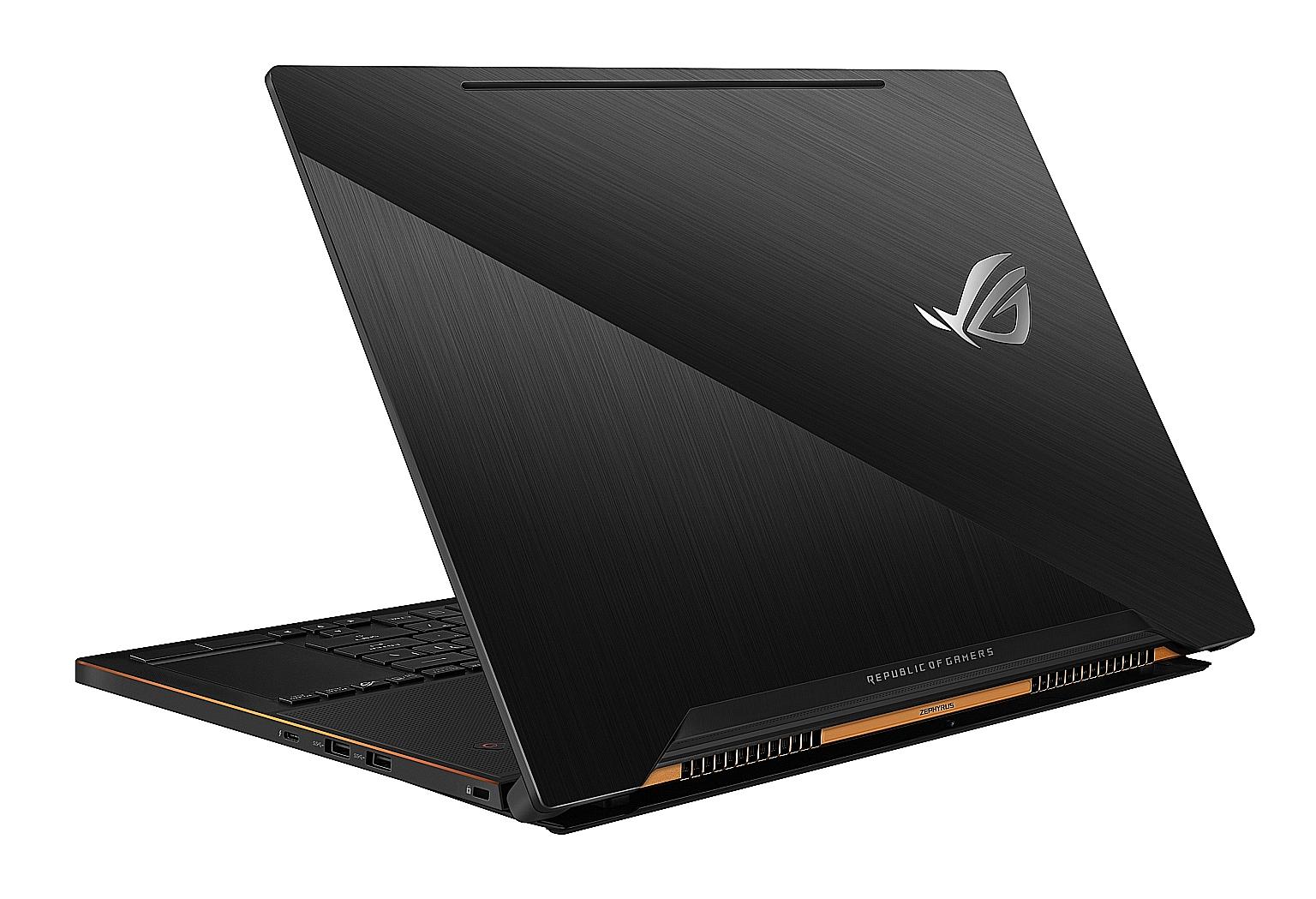Gaming
Asus' Zephyrus sets the bar high for slim gaming laptops
This model from Asus, using Nvidia's top-end GTX 1080, is cool in more ways than one
Sign up now: Get ST's newsletters delivered to your inbox

The Asus ROG Zephyrus GX501 appears to be the first 15-inch laptop with a GTX 1080, which is typically reserved for chunkier laptops with bettercooling systems.
PHOTO: ASUS
Vincent Chang
Follow topic:
It would have been unimaginable just a few years ago that gaming laptops would soon rival the performance of desktop PCs.
But Nvidia is pushing the boundaries of graphics chips, which heavily affect the gaming performance in computers.
Last year, the chipmaker introduced its GeForce GTX 10 series graphics chips, which are said to perform within 10 per cent of the equivalent desktop model.
However, the highest-end graphics chips run too warm to fit in slimmer gaming laptops. They end up in bulky models with screens that exceed 17 inches. These high-end laptops are practically desktop PCs in all but name.
Not anymore. At the Computex tradeshow in June, Nvidia announced its Max-Q Design, a new approach to building portable gaming laptops.
Its stated goal is to partner laptop vendors to make powerful notebooks as thin as 18mm.
The first Max-Q laptop available here is the Asus ROG Zephyrus GX501. At around 2.2kg, it is not as light as gaming laptops from the likes of Aorus, MSI or Razer.
But the Zephyrus comes with a more powerful GTX 1080 chip that will run every current video game (and most upcoming titles) without a hitch. As far as I know, it is the first 15-inch laptop with a GTX 1080, which is typically reserved for chunkier laptops with better cooling systems.
-
TECH SPECS
PRICE: $4,898
PROCESSOR: Intel Core i7-7700HQ (2.8GHz)
GRAPHICS: Nvidia GeForce GTX 1080 8GB GDDR5X (Max-Q)
RAM: 24GB
SCREEN SIZE: 15.6 inches, 1,920 x 1,080 pixels
CONNECTIVITY: 1 x Thunderbolt 3, 4 x USB 3.0, HDMI, audio jack
BATTERY: 50 watt-hour
RATING
FEATURES: 4/5
DESIGN: 4/5
PERFORMANCE: 5/5
BATTERY LIFE: 1/5
VALUE FOR MONEY: 3/5
OVERALL: 4/5
To achieve this feat, it has a unique cooling mechanism. When you open the lid, a panel at the laptop base opens up to suck in more cool air. Warm air is then vented out from the left side.
Given that it is a gaming laptop, this air intake is predictably lined with glitzy red LEDs. The keyboard, too, offers a multitude of colours, though you cannot pick a unique colour for each individual key.
Overall, the laptop looks subdued by gaming laptop standards. The ROG logo on its brushed metal lid does not light up and the copper trim at its sides is more understated rather than flashy.
In any case, you'd probably be staring at the keyboard - shifted downwards to the edge of the laptop to accommodate the air intake system. The touchpad is on the right and doubles as a virtual number pad upon pressing a button.
It is not the most comfortable keyboard to type on, though Asus has tried to mitigate this by bundling a separate palm rest. Key travel is decent.
There is no 4K screen to complement the laptop's powerful graphics. Instead, Asus has, in my opinion, correctly opted for a 120Hz high-refresh-rate display to enable silky smooth gameplay. Nvidia's G-Sync feature, which synchronises the game's frame rates to the display's refresh rate, is also supported.
Its matte display has good viewing angles, too, as it uses an in-plane switching (IPS) panel. However, the screen is too dim for my liking - max brightness felt normal and not at all glaring.
Performance-wise, the Zephyrus was definitely faster than other slim gaming laptops. With the Extreme profile in the preloaded ROG Gaming Center app, it managed around 133 frames per second (fps) in Doom at Ultra setting and about 104fps in Crysis 3 at Very High setting.
While these figures look good on their own, they are lower than those achievable on a similar desktop PC. For instance, the Lenovo Y710 Cube, which also has a GTX 1080 chip, managed 145fps in Doom and 122fps in Crysis 3. This is because the GTX 1080 in the Zephyrus runs at a lower clock speed than the desktop version. In short, its performance ends up somewhere between a full- power GTX 1080 and a GTX 1070.
Like most gaming laptops, its cooling fans ramped up while it was running benchmarks. But the noise was not as annoying as the high-pitched whine on some laptops. The speakers, too, did a good job of drowning out the din. And, while the bottom of the laptop got fairly warm, it was still tolerable to me.
Battery life remains the Achilles' heel of gaming laptops. The Zephyrus managed just 2hr in our usual video playback test. I did not try running a game on battery power, but I think it would be even more short-lived.
I do have some reservations about the intake design. Its tiny hinges look fragile, while the open-intake system seems like a spilt drink away from a disaster. The keyboard and battery life are other downsides.
But the Zephyrus certainly shows us where high-end gaming laptops are heading - into our bags and not chained to our desks.
•Verdict: The ROG Zephyrus is not without its compromises, but it is a significant step towards truly portable yet powerful gaming laptops.

